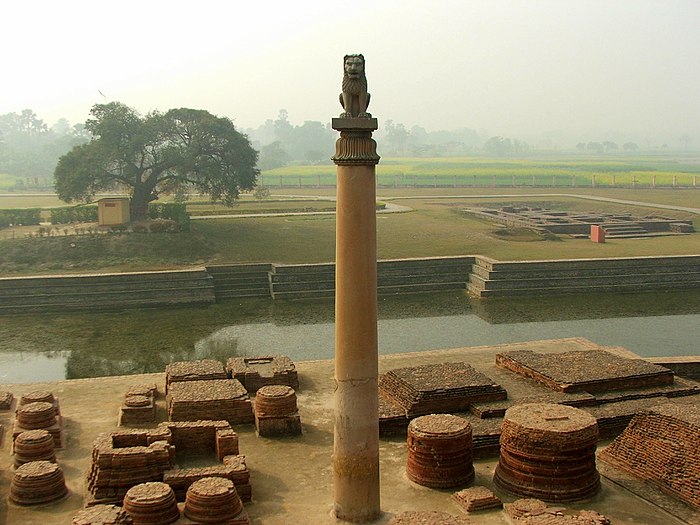Introduction:
The Mauryan Empire not only thrived in the fields of administration, governance, and cultural patronage but also made significant contributions to the world of art and sculpture. Renowned for its realistic and expressive style, Mauryan sculptural art reached new heights during this period. Among the most iconic creations of this era are the Ashoka Pillars, which stand as a testament to the empire’s artistic achievements and the profound influence of Buddhism.
The Realism and Expressive Power of Mauryan Sculptures:
Mauryan sculptural art was characterized by its remarkable realism and a vivid depiction of human emotions. The artists of this period paid meticulous attention to detail, capturing the nuances of facial expressions, drapery, and anatomical features. The sculptures exuded a sense of vitality, making them come alive with emotion and energy.
The Ashoka Pillars: Majestic Monuments of Art and Ideals:
The Ashoka Pillars, named after Emperor Ashoka, are among the most celebrated examples of Mauryan sculptural art. These monolithic pillars, made primarily of polished sandstone, were erected throughout the empire and served various purposes, including marking important sites and disseminating Ashoka’s edicts.
One of the most remarkable aspects of the Ashoka Pillars is the intricately carved capitals that crown them. The capitals feature a variety of motifs, most notably the famous Lion Capital at Sarnath, which is now the national emblem of India. The Lion Capital, with its four majestic lions facing different directions, represents power, strength, and authority. Other motifs include elephants, bulls, and lotus flowers, symbolizing fertility, prosperity, and spiritual enlightenment.
The Carvings and Inscriptions: Spreading Buddhist Ideals:
The carvings and inscriptions on the Ashoka Pillars played a crucial role in promoting Buddhist ideals and disseminating Ashoka’s message of peace, tolerance, and moral righteousness. The inscriptions, written in Brahmi script, recorded Ashoka’s edicts, which advocated principles of social welfare, religious harmony, and ethical conduct.
The carvings on the pillars showcased scenes from Buddhist narratives, such as the life of the Buddha, Jataka tales, and the Ashoka Chakra (the Wheel of Dharma). These intricate carvings not only served as visual narratives but also inspired reverence and piety among the populace.
Impact and Legacy:
The Mauryan sculptural art, particularly the Ashoka Pillars, had a far-reaching impact, both artistically and culturally. These masterpieces not only influenced the subsequent development of Indian art but also served as a source of inspiration for future generations of sculptors and artisans.
Furthermore, the Ashoka Pillars played a significant role in the diffusion of Buddhism, as they served as markers of sacred sites and disseminated Buddhist teachings. The exquisite craftsmanship and artistic finesse of these pillars attracted pilgrims and visitors from far and wide, contributing to the spread of Buddhism beyond the boundaries of the Mauryan Empire.
Conclusion:
The Mauryan Empire’s artistic achievements, particularly in sculptural art, remain a testament to the exceptional craftsmanship, realistic depiction, and profound spiritual influence of the era. The Ashoka Pillars, with their exquisite carvings, intricate details, and symbolic significance, stand as lasting symbols of the Mauryan Empire’s cultural legacy and the diffusion of Buddhist ideals. Through their artistic endeavors, the Mauryan artists created timeless masterpieces that continue to inspire awe and admiration, providing a glimpse into the artistic splendor and cultural richness of ancient India.
